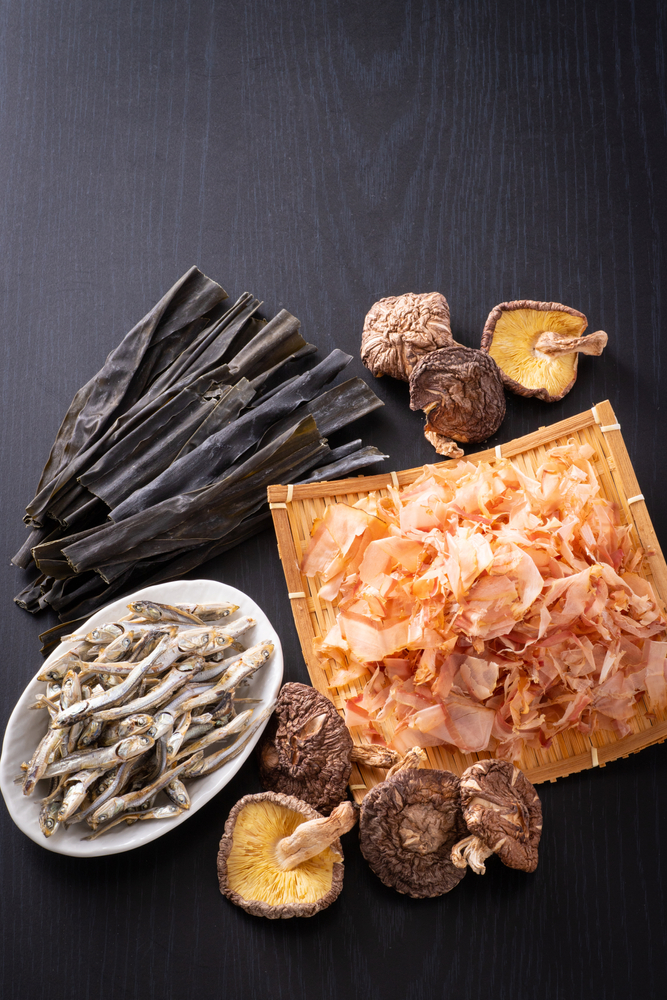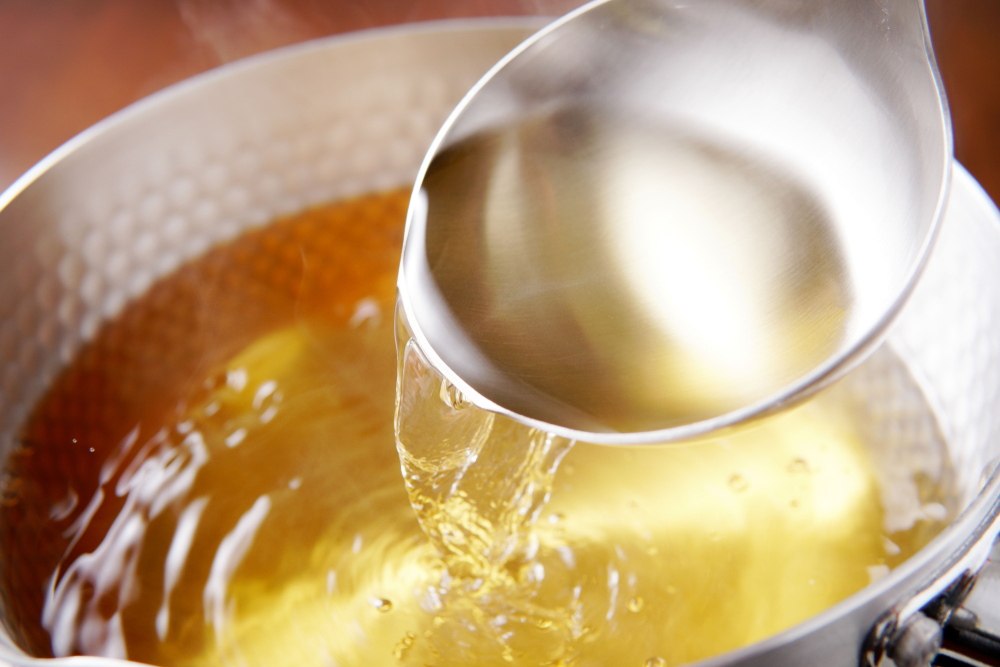The latest version how to make Dashi stock
Learn from legend
this is how to make ichiban-dashi (konbu and bonito flakes)
what is ichiban-dashi?
Ichiban dashi is a combination of Katsuobishi (bonito Flakes) and Konbu (Dried kelp). This simple clear stock is used for most of the Japanese dishes as a main or backbone. For chefs who work for Japanese restaurant, or even other cuisine, it is essential to know how to make.
Understanding dashi stock
Dashi is a broth by placing ingredients in water and extracting flavours or aromatic substances from them. Mainly Kombu Katsuobushi. When the two ingredients are combined, a synergy arises between the glutamic acid of the Kombu and the inosinic acid that results in an ideal UMAMI taste.
Understanding UMAMI
To make a thing easy, Umami is one of the five basic tastes. Do you know what's others? It's Sweet, Sour, Salty and bitter. Umami was the last of five to be identified. Umami is found in amino acids like monosodium glutamate and nucleic acids like inosinic acid and guanylic acid. *Monosodium acid* Kombu, Cheese, Tomato, Soy sauce etc. *Inosinic acid* Katsuobushi, Chicken, Beef etc. *Guanylic acid* Dried shiitake, Dried porcini etc.

Some cool tips you should know
01.
Soft water, kombu, katsuobushi
The water is ideally soft water. Soft water can be extracted more Umami flavour from Kombu. In England, the water from tap is hard water, you can use soft mineral water like Volvic. The recipe from Chef Yoshihiro Murata( Kyoto Kikunoi )is; Water 1800ml : Kombu 30g : Katsuobushi 50g
02.
Put Kombu in the water and low heat. keep at 60℃ an hour
Put some Kombu in the cold water in the pot, heat over low heat. Slowly rising temperature to 60℃. Once liquid has reached 60℃, simmer for 1 hour. It's better to use thermometer but if not, 60℃ is when you put your finger in, you can't hold more than 1 second, that's about 60℃.
03.
Never boil
After 1 hour, take out the kombu. (*Glutamic acid cannot be extracted above 80℃ because of protein coagulation. ) Rise temperature to 85℃ over high heat.
04.
put the katsuobushi after off the heat
When temperature reaches 85℃, remove pot from heat and add Katsuobushi flakes. Inosinic acid (Umami from Katsuobushi flakes) can be extracted in 10 seconds. so you don't need to leave it for a long.
05.
Do not squeeze
Wait for the Katsuobushi flakes to thoroughly soak up water. 10 seconds later, strain liquid through a fine-mesh cloth and leave to drain naturally. Do not squeeze. otherwise dashi stock will become muddy.
Learn from Legend.
Look at the You Tube video below. the legend Yoshihiro Murata. I’m sorry there is no English translate. But you can see my explanation above which is from him. In this video he is making one of a famous Japanese dish ‘Oyako-don’. Before he makes this plate, He shows how to cook authentic Japanese dashi stock.
Oyako-don tips
01.
Ingredients
Chicken thigh 70g
kujo negi(spring onion) 10g
Dashi 35ccc
Mirin 25 cc
light Soy 15 cc
Potato starch 1 tea spoon
Water 1 tea spoon
02.
How to
Chicken thigh should be small cut. about 1 cm square. Spring onion should be diagonal, green part should be thicker than white part. Put mixed liquid and chicken in the pot and heat on. When the chicken is cooked through, add some starch (mix with water) to make it thicker and stable. Add spring onion, then add beaten eggs. Put Sansho pepper as you like.
03.
Ratio for Donburi
Chef Murata says for any kind of Donburi, this ratio can be used. Dashi 7 Mirin 5 Soy 3 (even if dark soy, light soy, it's same)
04.
starch is the key
After cooking through the chicken, you should put potato starch mixed with water. (When you add it, heat off first, put starch and turn on the heat and bring it to boil again) This process makes the eggs fluffy and smooth texture.
05.
Don't beaten the egg too much
When you add the egg at last moment, do not mix the egg too much. Just beaten roughly then pour it in at once. When the egg is getting harden, mix slowly and when its half cooked or still runny, remove from the heat and let it cook through with the remaining heat.
